|
|
. |
In Mainburg stationierte Maschinen
| Baureihenbezeichnung |
Bild |
Achsfolge |
Länge ü. P. |
Gewicht |
PS |
km/h |
Betriebszeit |
|---|
| bis 1925 |
ab 1925 |
|---|
| bay. D VII |
(9876) |
|
C |
7,56 m |
26,7 t |
175 |
45 |
1894 - 1898 |
| bay. D XI |
(984-5) |
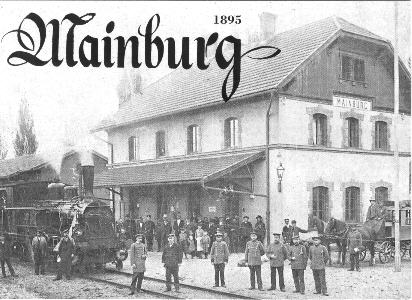 |
C1 |
9,26 m |
40,2 t |
320 |
45 |
1898 - 1922 |
| bay. PtL 2/2 |
(983) |
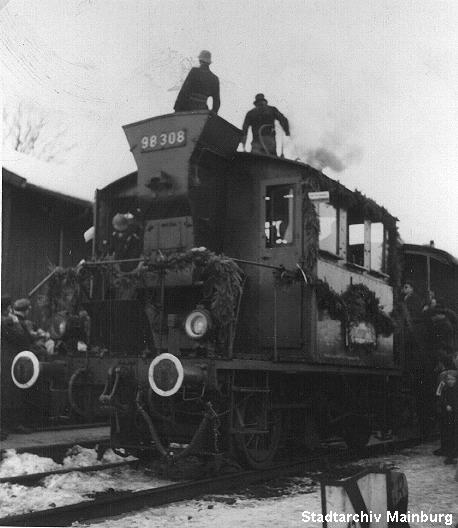 |
B |
6,98 m |
22,7 t |
210 |
50 |
1909 - 1912 |
| bay. GtL 4/4 |
988 |
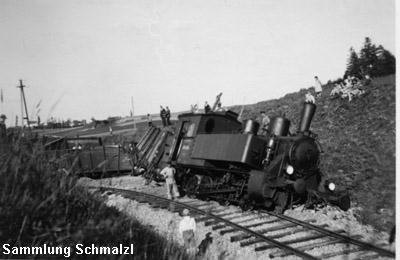 |
D |
9,25 m |
43 t |
450 |
40 |
1922 - 16.05.1953* |
| bay. GtL 4/5 |
9810 |
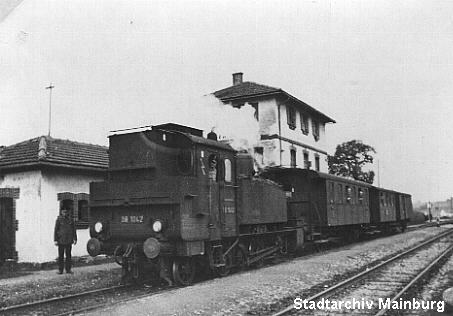 |
D1 |
10,05 m |
54,5 t |
450 |
45 |
1930 - 19.05.1951* |
| bay. PtL 2/3 |
700 |
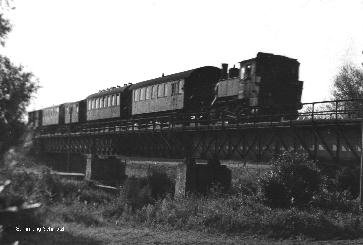 |
1B |
9,16 m |
39,6 t |
420 |
65 |
um 1930* und vom
05.10.1952 - 16.05.1953 |
| preuß. G 10 |
5710-35 |
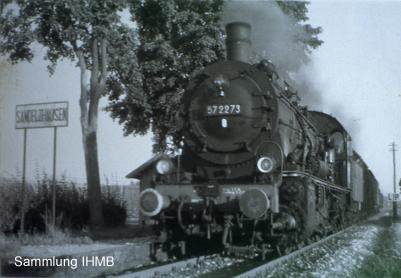 |
E |
18,9 m |
76,6 t |
1100 |
60 |
während des 2. Weltkrieges
und vom 05.10.1952 - 16.05.1953 |
|
VT 709 |
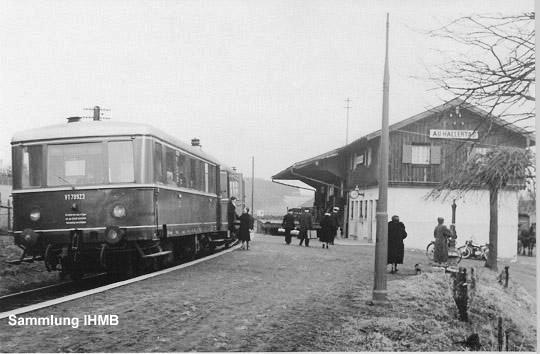 |
A1 |
12,28 m |
18,0 t |
150 |
75 |
17.05.1953 - 28.05.1960 |
|
VT 95 |
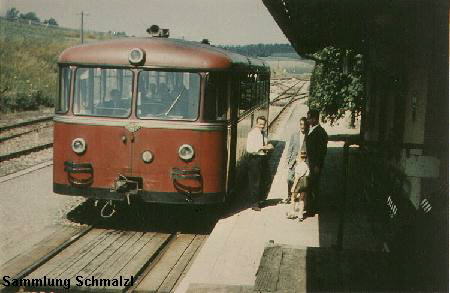 |
A1 |
13,3 m |
13,3 t |
150 |
90 |
17.05.1953 - 28.09.1969 |
* mit zeitweisen Unterbrechungen
Auch die Baureihe 86 war in Mainburg kurzzeitig beheimatet.
Weitere, regelmäßig eingesetzte Typen
| Baureihenbezeichnung |
Bild |
Achsfolge |
Länge ü. P. |
Gewicht |
PS |
km/h |
Betriebszeit |
|---|
| bis 1968 |
ab 1968 |
|---|
| 50 |
050 bis 053 |
|
1E |
22,94 m |
86,9 t |
1625 |
80 |
bis 1973 |
| 52 |
- |
|
1E |
22,98 m |
84,0 t |
1620 |
80 |
|
| 5415-17 |
ehem. bay. G 3/4H |
|
1C |
17,5 m |
62,2 t |
1040 |
65 |
|
| 64 |
064 |
|
1C1 |
12,4 m |
74,9 t |
950 |
90 |
|
| 86 |
086 |
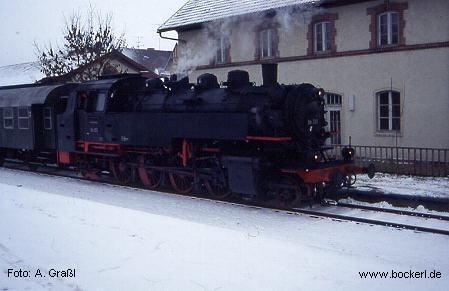 |
1D1 |
13,82 m |
88,5 t |
1030 |
70 |
|
| 9818 |
- |
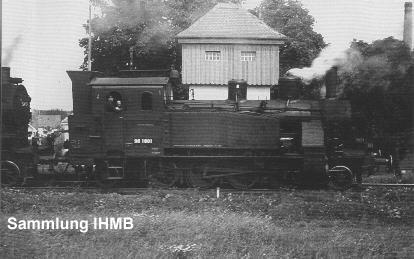 |
1D1 |
11,6 m |
60,8 t |
470 |
70 |
Okt. 1952 - Sep. 1953 |
| Köf II |
322/323 |
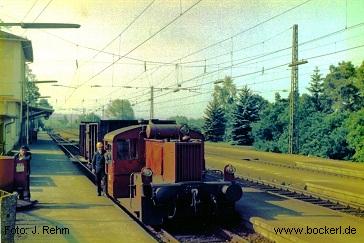 |
B |
6,45 m |
16 t |
128 |
30 |
|
| Köf III |
332 |
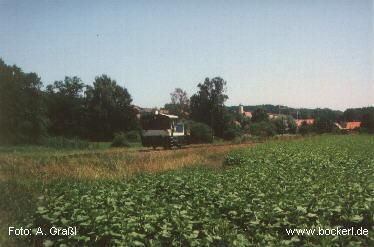 |
B |
7,83 m |
20-24 t |
240 |
30 |
|
| V60 |
260-265 |
|
C |
10,45 m |
48-53 t |
650 |
60 |
|
| V90 |
290 |
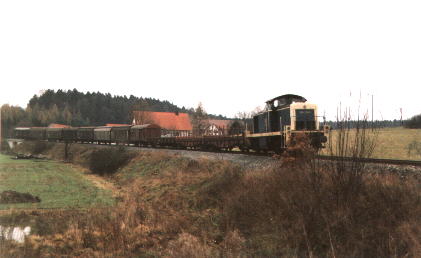 |
BB |
14,32 m |
78 t |
1350 |
80 |
|
| V100 |
211/212 |
|
BB |
12,1 m |
62 t |
1100-1350 |
100 |
|
| -/V160 |
215/216 |
|
BB |
16,4 m |
75-77 t |
1900 |
120/140 |
|
| - |
218 |
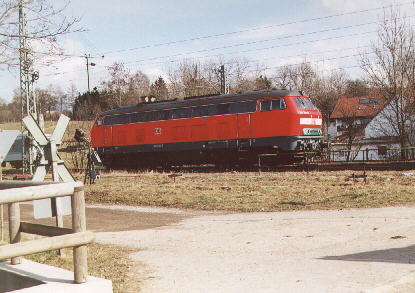 |
BB |
16,4 m |
80 t |
2500 |
140 |
|
| - |
232 |
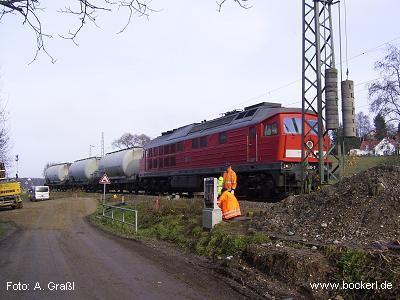 |
CC |
20,3 m |
120 t |
3000 |
120 |
seit 2002 |
| - |
247 (Class 77) |
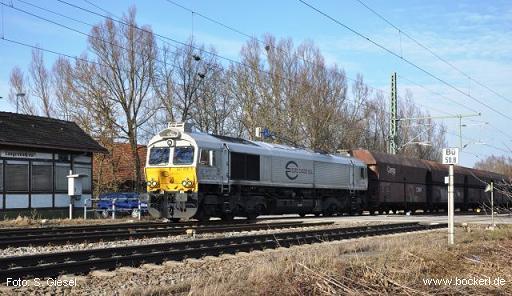 |
CC |
21,3 m |
126 t |
3200 |
120 |
seit 2011 |
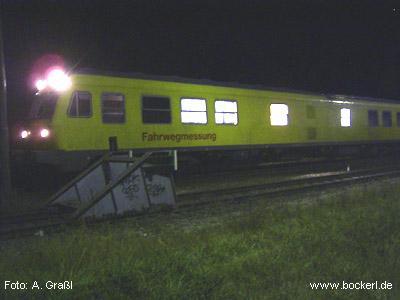
Welche weiteren Fahrzeugtypen letztendlich noch unterwegs waren - das weiß niemand mehr so genau. Da bringt auch der Messzug kein Licht mehr ins Dunkel, der
am 26.10.2005 überraschend gegen 21:00 Uhr nach Anglberg rauschte und hier stellvertretend stehen soll.
Im Kraftwerk sind auch mehrere Werksloks stationiert.

|


